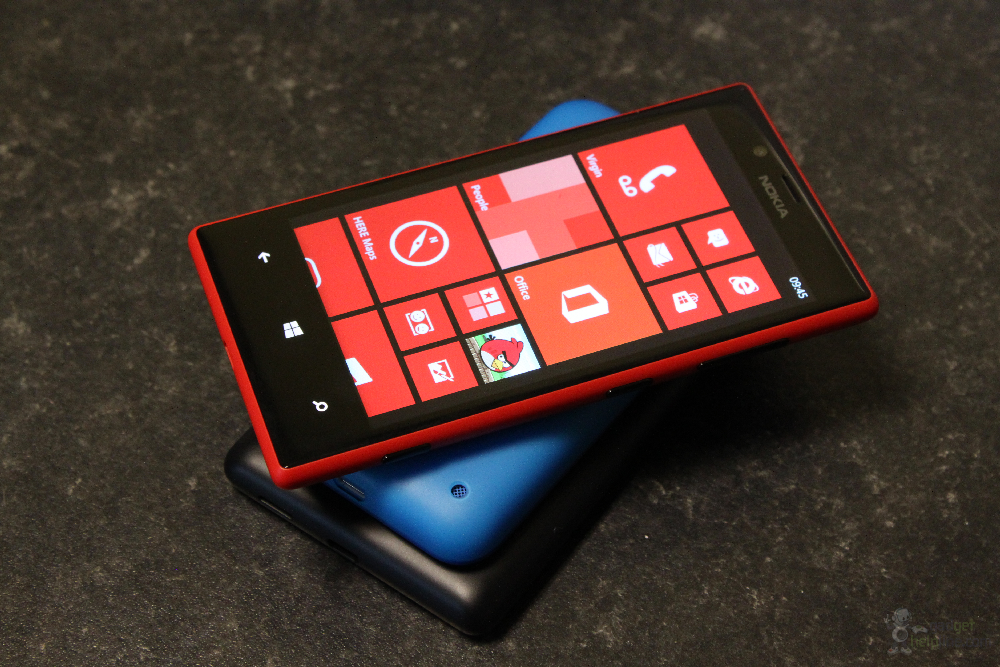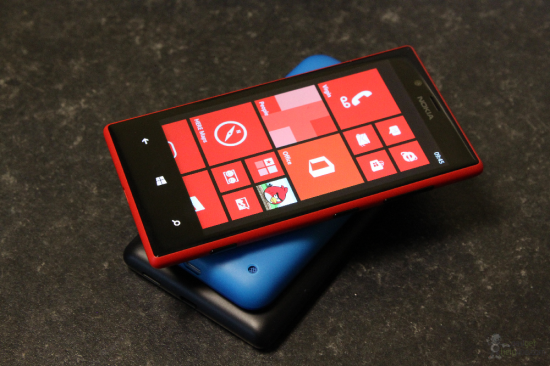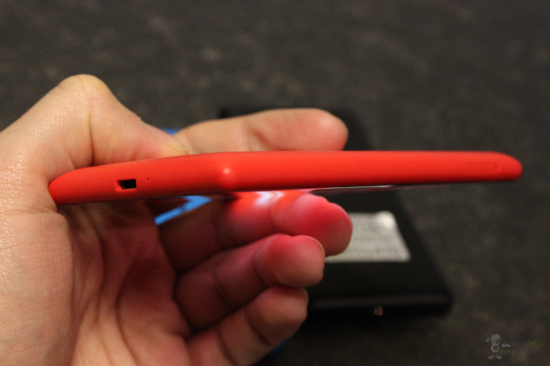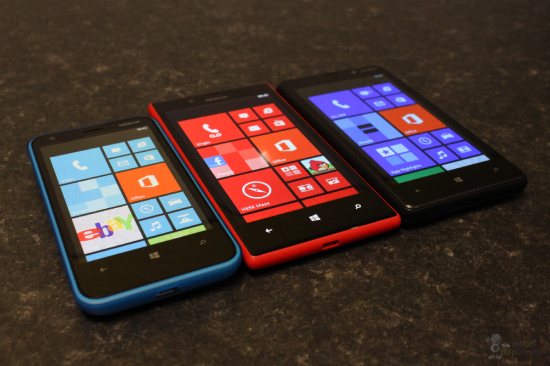The addition of Nokia’s two newest Windows Phones, the Lumia 520 and Lumia 720, will bring the total number in the range up to five. Of those five, the mid-range model will be the Lumia 720, which will nestle between the excellent and affordable Lumia 620 and the larger and more powerful Lumia 820.
Nokia revealed the two new devices at Mobile World Congress earlier this year, with the decidedly entry level Lumia 520 making an entrance alongside the impressive 720.
Sat side by side with the Lumia 820, the 720 is only marginally taller but is much thinner and lighter. On paper the 720 is 32g lighter and 0.9mm thinner, but its tapered edges make the phone feel even slimmer in the hand.
The design reminds us of the Windows Phone 8X by HTC, with its squared corners and back tapering down to thinner edges all round, although the sides are slightly thicker and more curved, which makes the phone easier and more comfortable to hold than HTC’s effort.
Unlike the Lumia 620 and 820, the 720 doesn’t feature pop-off rear covers that can be swapped at will. The phone is a unibody design with no creaky or moving parts, with a headphone socket and iPhone-style pop-out SIM tray on the top and the now standard array of volume, power and camera buttons down the right edge.
Screen quality certainly hasn’t been sacrificed with the Lumia 720, and you get exactly the same 4.3-inch display with Nokia’s ClearBlack technology and Gorilla Glass to make it ultra-tough. As such the quality is excellent, with accurate colours, deep blacks and bright whites – the latter being excellent for reading.
The £90 price difference between the 720 and the 820 has to come from somewhere, and it’s most likely coming from the changes in processor, RAM and camera. The Lumia 720 features 512MB RAM (half that of the 820), a dual-core 1GHz processor and a new 6.7 megapixel sensor, which still retains Nokia’s famous Carl Zeiss optics tech.
We found the Lumia 720 to be plenty zippy enough, coping with an array of recent games and multitasking between videos, web browsing and messaging apps well in our tests. We can’t see the drop in RAM and processor speeds causing any problems, which is certainly good news for would-be buyers as it’s an area that could prompt questions.
As for the camera, it seems Nokia has come up trumps again in its specialist area. The 6.7 megapixel rear sensor takes well lit and great quality photos, even in low light thanks to the enlarged sensor. You’ve also got that Nokia trait of the physical camera button, which is something that makes taking phone photos so much easier, yet so few manufacturers actually use. Autofocus and the actual picture taking process could be a little snappier for our liking, but that’s down to the processor.
Unfortunately in terms of video you can only shoot in 720p HD quality and not the now-norm which is 1080p Full HD. The video quality is still decent however, with impressive sound recording.
During our hands on time with the phone we were taken aback by the loudness and quality of the rear speaker. Whilst we don’t condone blaring your music through a phone speaker in public, the Lumia 720 has a speaker that packs a punch and provides good quality, which is great for watching movies and playing games.
Further testing will be required to see whether the 720’s larger battery will see it last that much longer than the 820, which for some reason has a considerably smaller battery inside – if it does then the Lumia 720 will be a steal at just under £300.
If you’re after a new phone but don’t want to be tied into a contract, then at £300 the Lumia 720 seems to be a great choice. UK networks will begin to offer the phone on contracts towards the end of this month.



